Sonic hedgehog regulation of cavernous nerve regeneration and neurite formation in aged pelvic plexus
- PMID: 30391523
- PMCID: PMC6342483
- DOI: 10.1016/j.expneurol.2018.11.001
Sonic hedgehog regulation of cavernous nerve regeneration and neurite formation in aged pelvic plexus
Abstract
Introduction: Erectile dysfunction (ED) is a significant health concern that greatly impacts quality of life, and is common in men as they age, impacting 52% of men between the ages of 40 and 70. A significant underlying cause of ED development is injury to the cavernous nerve (CN), a peripheral nerve that innervates the penis. CN injury also occurs in up to 82% of prostatectomy patients. We recently showed that Sonic hedgehog (SHH) protein delivered by peptide amphiphile (PA) nanofiber hydrogel to the CN and penis of a prostatectomy model of CN injury, is neuroprotective, accelerates CN regeneration, improves erectile function ~60%, preserves penile smooth muscle 56% and suppresses collagen deposition 30%. This regenerative potential is substantial in an adult prostatectomy model (P120). However prostatectomy patients are typically older (61.5 ± 9.6 years) and our models should mimic patient conditions more effectively when considering translation. In this study we examine regenerative potential in an aged prostatectomy model (P200-329).
Methods: The caudal portion of the pelvic ganglia (MPG) and CN were dissected from adult (n = 11), and aged (n = 13) Sprague Dawley rats, and were grown in organ culture 3 days. Uninjured and 2 day CN crushed MPG/CN were exposed to Affi-Gel beads containing SHH protein, PBS (control), or 5e1 SHH inhibitor. Neurites were quantified by counting the number of growth cones normalized by tissue perimeter (mm) and immunohistochemistry for SHH, patched1 (PTCH1), smoothened (SMO), GLI1-3, and GAP43 were performed.
Results: SHH treatment increased neurites 3.5-fold, in uninjured adult, and 5.7-fold in aged rats. Two days after CN crush, SHH treatment increased neurites 1.8-fold in adult rats and 2.5-fold in aged rats. SHH inhibition inhibited neurite formation in uninjured MPG/CN but not in 2 day CN crushed MPG/CN. PTCH1 and SMO (SHH receptors), and SHH transcriptional activators/repressors, GLI1-3, were abundant in aged MPG/CN with unaltered localization. ROCK1 was induced with SHH treatment.
Conclusions: Reintroduction of SHH protein in an aged prostatectomy model is even more effective in promoting neurite formation/CN regeneration than in the adult. The first 48 h after CN injury are a critical window when growth factors are released, that impact later neurite formation. These studies are significant because most prostatectomy patients are not young and healthy, as with adult rats, so the aged prostatectomy model will more accurately simulate ED patient response. Understanding how neurite formation changes with age is critical for clinical translation of SHH PA to prostatectomy patients.
Keywords: Aging; Cavernous nerve regeneration; Neurite; Prostatectomy; Sonic hedgehog.
Published by Elsevier Inc.
Conflict of interest statement
Declaration of Interest:
Declarations of interest include iEDISON 0577703-18-0007, -0008, -0009
Figures
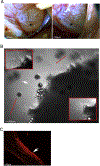
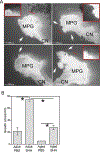

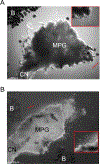
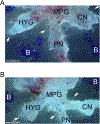
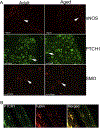
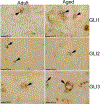

References
-
- Feldman HA, Goldstein I, Hatzichristou DG, Krane RJ, McKinlay JB. Impotence and its medical and psychosocial correlates: results of the Massachusetts Male Aging Study. J Urol 1994; 151: 54–61. - PubMed
-
- Heruti R, Shochat T, Tekes-Manova D, Ashkenazi I, Justo D (2004) Prevalence of erectile dysfunction among young adults: results of a large-scale survey. J Sex Med 2004; 1: 284–291. - PubMed
-
- Pace G, Del Rosso A, Vicentini C. Penile rehabilitation therapy following radical prostatectomy. Disabil Rehabil 2010; 32: 1204–1208. - PubMed
-
- Perimenis P, Markou S, Gyftopoulos K, Athanasopoulos A, Giannitsas K, Barbalias G. Switching from long-term treatment with self-injections to oral sildenafil in diabetic patients with severe erectile dysfunction. European Urology 2002; 41: 387–391. - PubMed
-
- User HM, Hairston JH, Zelner DJ, McKenna KE, McVary KT. Penile weight and cell subtype specific changes in a post-radical prostatectomy model of erectile dysfunction. J Urol 2003; 169: 1175–1179. - PubMed
Publication types
MeSH terms
Substances
Grants and funding
LinkOut - more resources
Full Text Sources
Other Literature Sources
Medical
Miscellaneous

